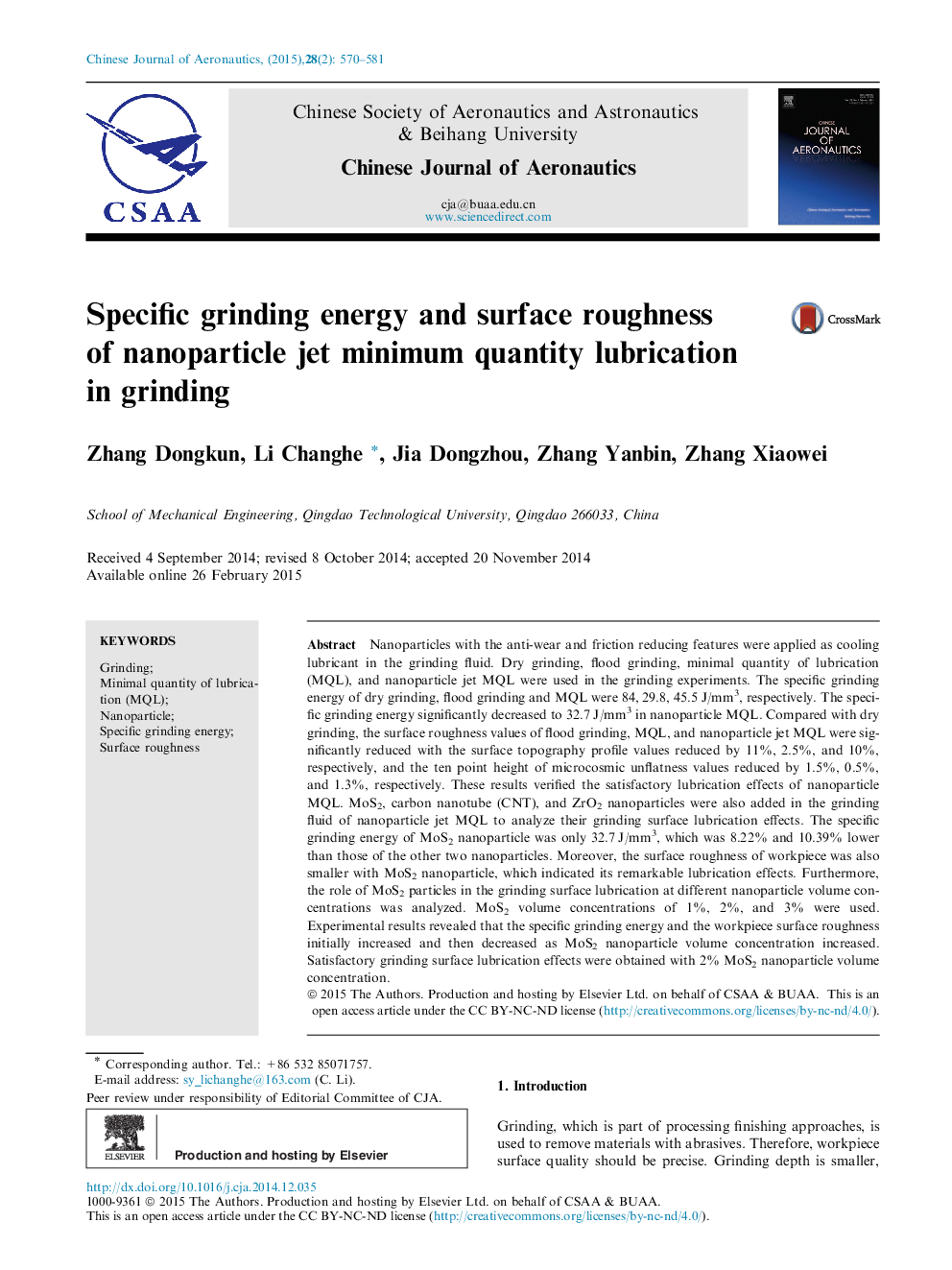| Article ID | Journal | Published Year | Pages | File Type |
|---|---|---|---|---|
| 757692 | Chinese Journal of Aeronautics | 2015 | 12 Pages |
Nanoparticles with the anti-wear and friction reducing features were applied as cooling lubricant in the grinding fluid. Dry grinding, flood grinding, minimal quantity of lubrication (MQL), and nanoparticle jet MQL were used in the grinding experiments. The specific grinding energy of dry grinding, flood grinding and MQL were 84, 29.8, 45.5 J/mm3, respectively. The specific grinding energy significantly decreased to 32.7 J/mm3 in nanoparticle MQL. Compared with dry grinding, the surface roughness values of flood grinding, MQL, and nanoparticle jet MQL were significantly reduced with the surface topography profile values reduced by 11%, 2.5%, and 10%, respectively, and the ten point height of microcosmic unflatness values reduced by 1.5%, 0.5%, and 1.3%, respectively. These results verified the satisfactory lubrication effects of nanoparticle MQL. MoS2, carbon nanotube (CNT), and ZrO2 nanoparticles were also added in the grinding fluid of nanoparticle jet MQL to analyze their grinding surface lubrication effects. The specific grinding energy of MoS2 nanoparticle was only 32.7 J/mm3, which was 8.22% and 10.39% lower than those of the other two nanoparticles. Moreover, the surface roughness of workpiece was also smaller with MoS2 nanoparticle, which indicated its remarkable lubrication effects. Furthermore, the role of MoS2 particles in the grinding surface lubrication at different nanoparticle volume concentrations was analyzed. MoS2 volume concentrations of 1%, 2%, and 3% were used. Experimental results revealed that the specific grinding energy and the workpiece surface roughness initially increased and then decreased as MoS2 nanoparticle volume concentration increased. Satisfactory grinding surface lubrication effects were obtained with 2% MoS2 nanoparticle volume concentration.
